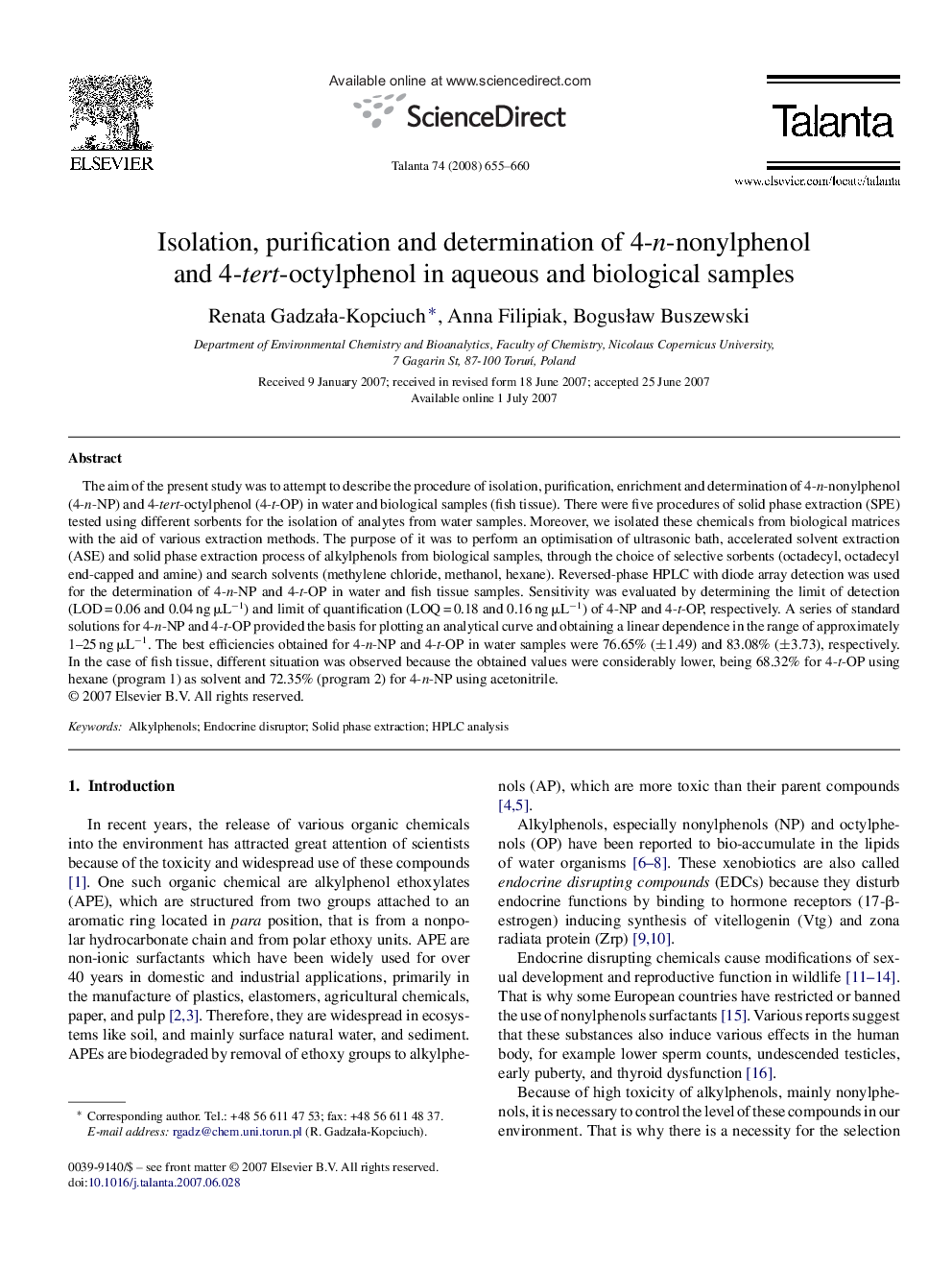| Article ID | Journal | Published Year | Pages | File Type |
|---|---|---|---|---|
| 1247097 | Talanta | 2008 | 6 Pages |
The aim of the present study was to attempt to describe the procedure of isolation, purification, enrichment and determination of 4-n-nonylphenol (4-n-NP) and 4-tert-octylphenol (4-t-OP) in water and biological samples (fish tissue). There were five procedures of solid phase extraction (SPE) tested using different sorbents for the isolation of analytes from water samples. Moreover, we isolated these chemicals from biological matrices with the aid of various extraction methods. The purpose of it was to perform an optimisation of ultrasonic bath, accelerated solvent extraction (ASE) and solid phase extraction process of alkylphenols from biological samples, through the choice of selective sorbents (octadecyl, octadecyl end-capped and amine) and search solvents (methylene chloride, methanol, hexane). Reversed-phase HPLC with diode array detection was used for the determination of 4-n-NP and 4-t-OP in water and fish tissue samples. Sensitivity was evaluated by determining the limit of detection (LOD = 0.06 and 0.04 ng μL−1) and limit of quantification (LOQ = 0.18 and 0.16 ng μL−1) of 4-NP and 4-t-OP, respectively. A series of standard solutions for 4-n-NP and 4-t-OP provided the basis for plotting an analytical curve and obtaining a linear dependence in the range of approximately 1–25 ng μL−1. The best efficiencies obtained for 4-n-NP and 4-t-OP in water samples were 76.65% (±1.49) and 83.08% (±3.73), respectively. In the case of fish tissue, different situation was observed because the obtained values were considerably lower, being 68.32% for 4-t-OP using hexane (program 1) as solvent and 72.35% (program 2) for 4-n-NP using acetonitrile.
